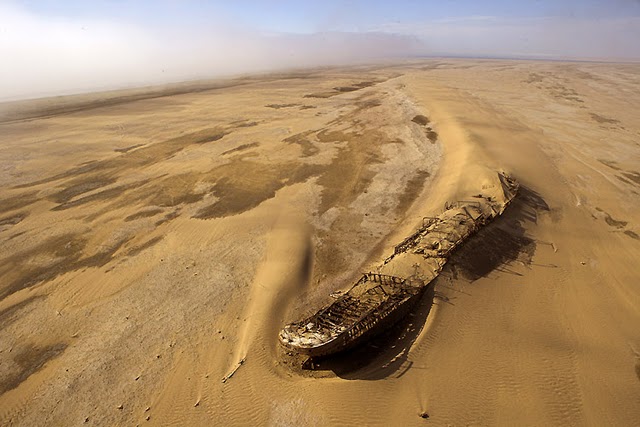Swakopmund and Walvis Bay Area
Surrounded by the ancient Namib desert and the inhospitable - but bounteous - Atlantic Ocean, the two towns of Swakopmund and Walvis Bay are alive with activity and adventure. The majority of towns and villages in Namibia have grown out of indigenous settlements and very often, out of necessity, were located close to sources of water. Names of places given by original inhabitants were very descriptive and in many cases those names were retained by European settlers who sometimes simplified pronunciations of the names. The Nama word "Tsoakhaub" can be translated as "excrement opening" which was an offensive but accurate description of the waters of the Swakop River when it flooded, carrying masses of mud, sand, pieces of vegetation and animal corpses to the Atlantic Ocean.
The Nama name was changed to "Swachaub" by German settlers, and with
the proclamation of Swakopmund as an independent district of German
South-West Africa in 1896, the present way of writing Swakopmund
(meaning Mouth
of the Swakop in
German) came into use.
The town's early growth spurt - with typically German art-nouveau
and neo-Gothic styles - faltered early in the 20th century when
Germany's control of the country was ceded to South Africa and it
lost all maritime operations to Walvis Bay.
Swakopmund wallowed in stagnation for a while, until a tar road was
constructed connecting it to the highlands of Namibia and the
thousands of affluent Windhoek residents. The old parts remain a
charming relic of times gone by and the town has developed into a
delightful seaside resort with recreation and relaxation high on its
list of priorities.
For its size (pop. c. 28,000), Swakopmund has a wide array of restaurants,
which
serve mainly seafood and steak, as well as many German staple
dishes.


For Walvis Bay, on the other hand, the future was never in doubt. On
a coastline almost 1600km long, Walvis Bay is one of only two
natural harbours (the other being Lüderitz) and this has guaranteed
the bustling town a steady maritime trade and a host of industrial
offshoots.
Industry aside, Walvis Bay has many attractions, not least of which
are its massive populations of seabirds and shorebirds in a vast
lagoon and south of the town at Sandwich Bay.
Together, Swakopmund and Walvis Bay have a lot on offer for the adventure-seeker:
quad-biking, dune-boarding (see
http://www.africa-adventure.org/a/alteraction/index.htm),
horse-riding, mountain biking, skydiving, surfing, on- and off-shore
fishing, catamaran or kayak tours into the bay, dolphin cruises and
diving-(although the water temperature is below ‘friendly’). Nearby
Rossmund Golf Club is also developing into one of the world's best
desert courses.
You can find the Catamaran Cruise website (to Pelican Point on
Silverwind) here:
http://www.namibian.org/travel/adventure/catamaran-namibia.html
To the North of Swapkopmund lies one of the largest seal colonies in
the world at Cape Cross, while to the South of Walvis Bay, lies the
wreck of the Eduard Bohlen, which ran aground in 1909 and now lies
partially covered in sand some 400m from the coastline. It is often portrayed
as a symbol of the harsh and desolate Namib environment.
